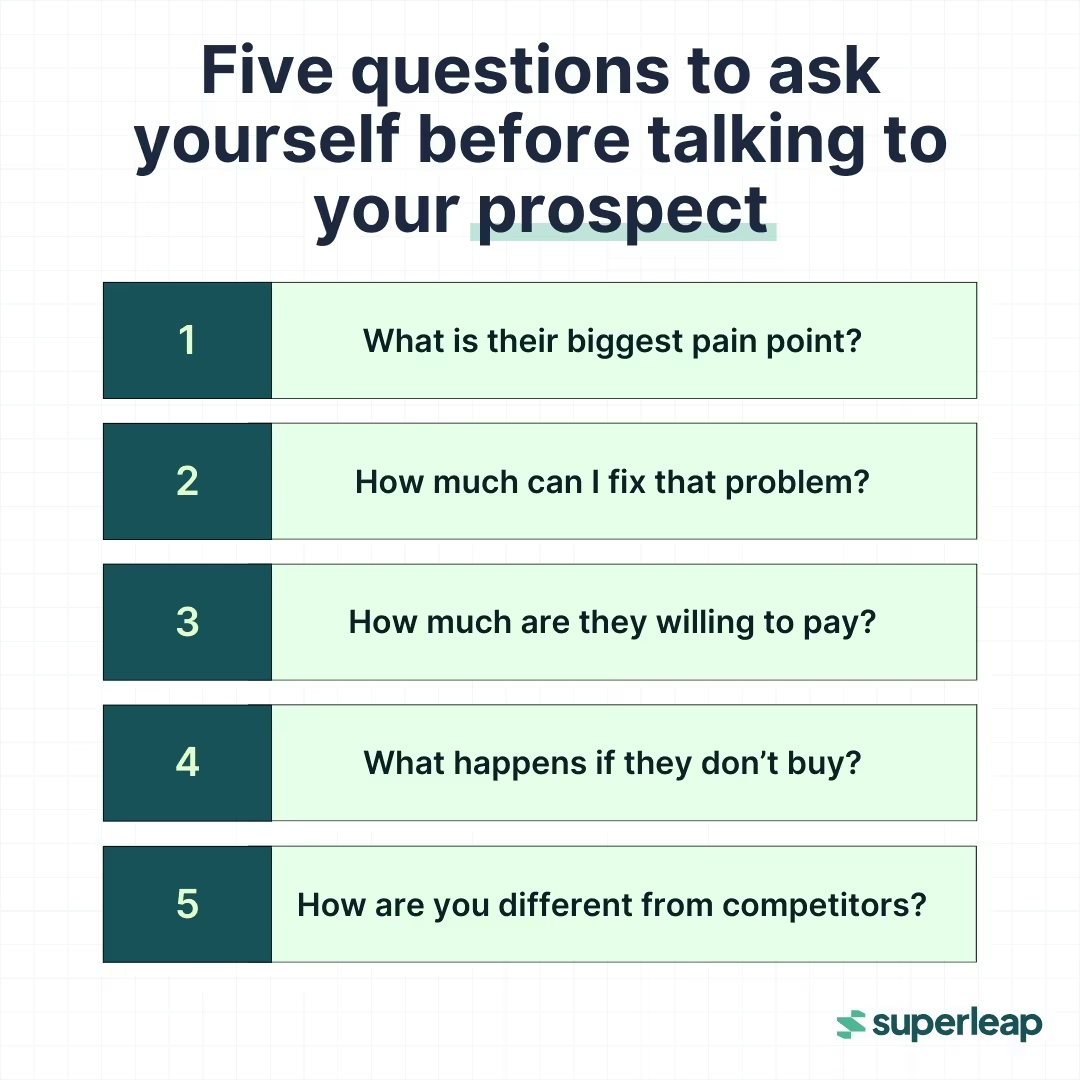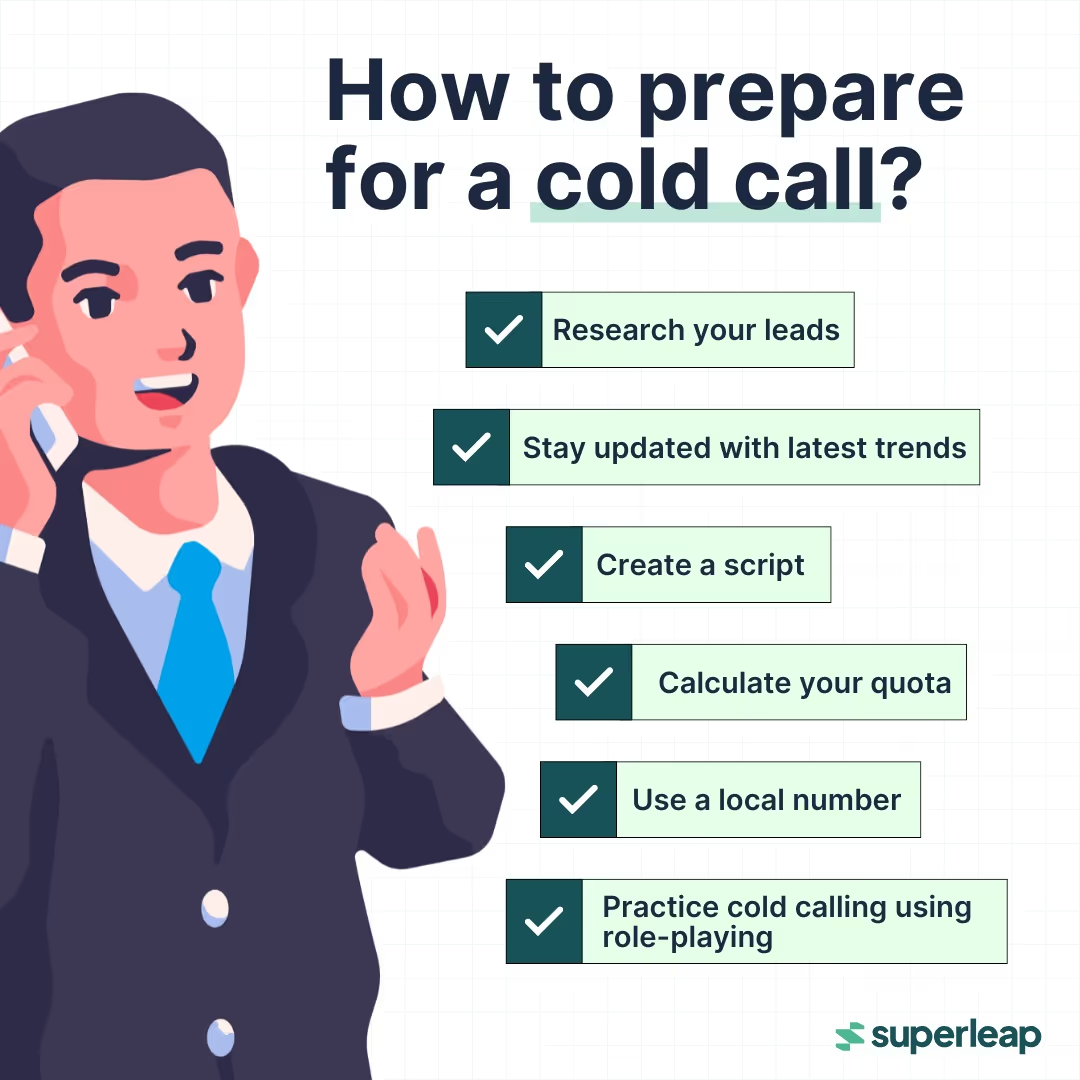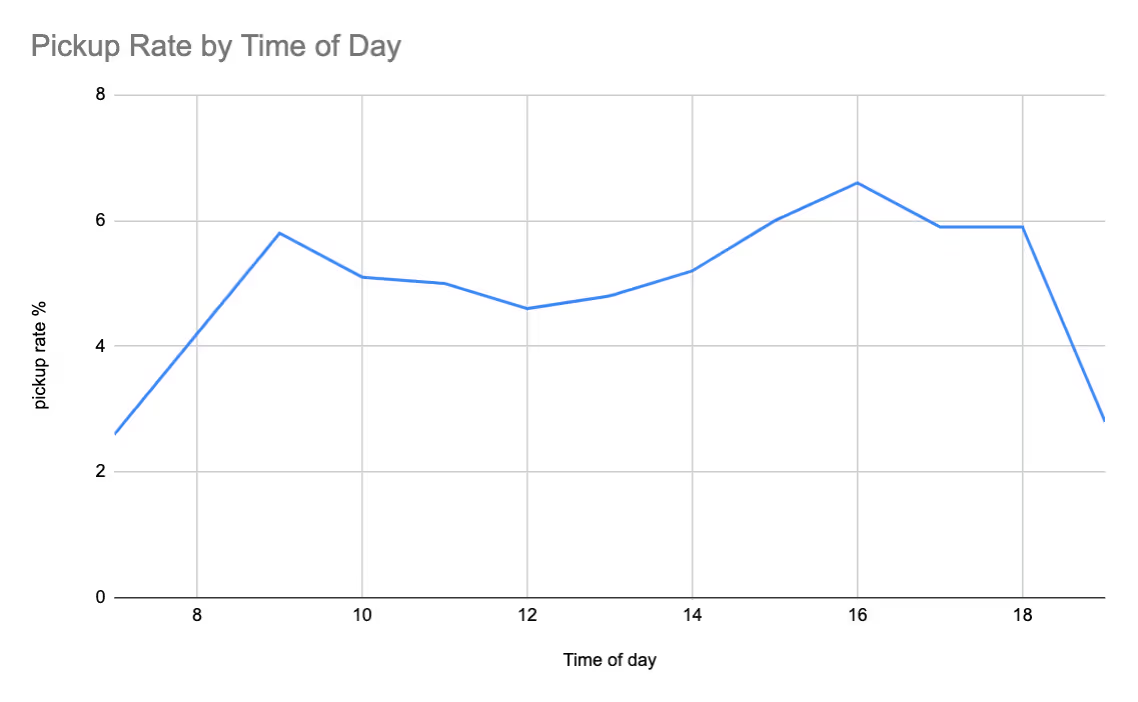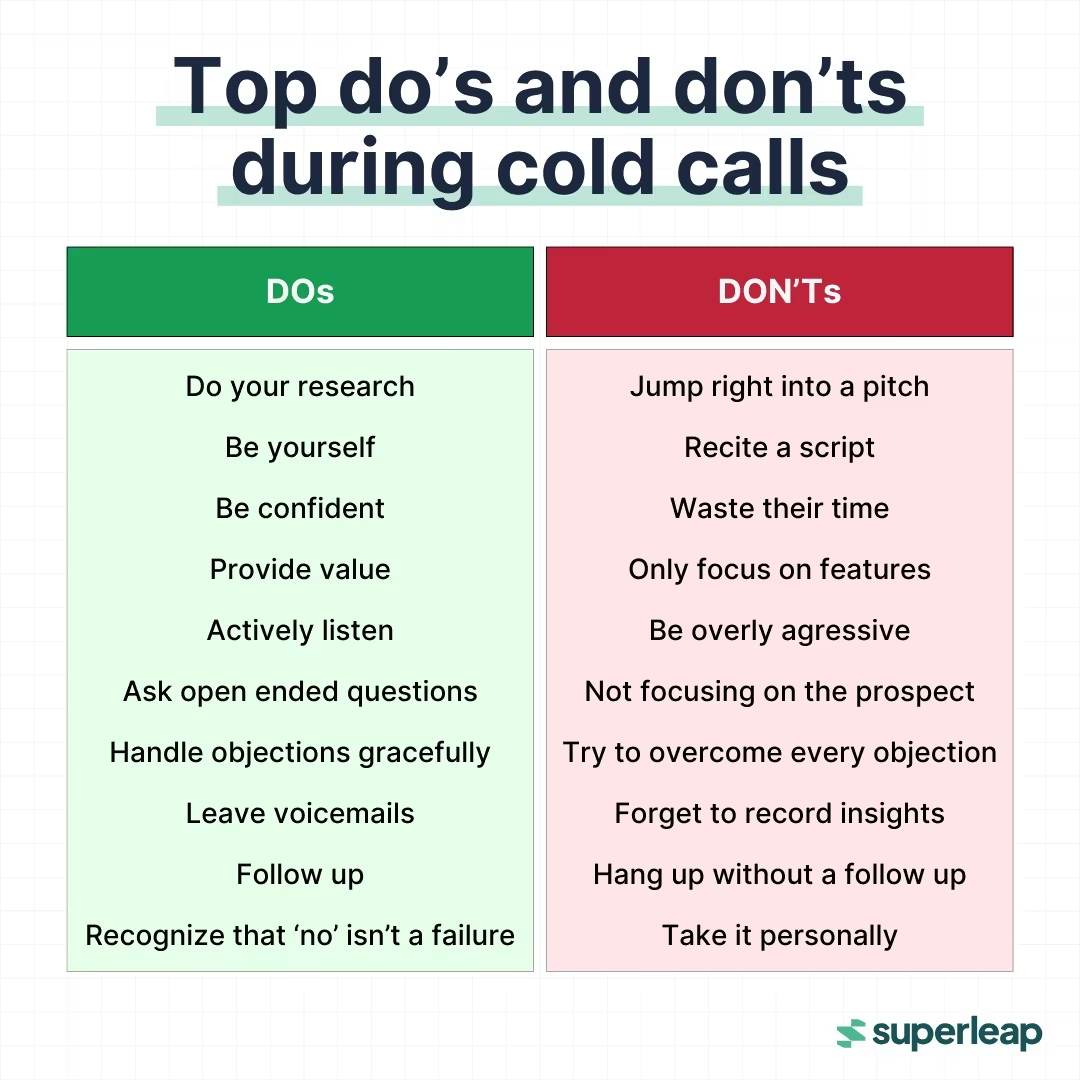

Cold calling, despite its challenges and the perception of it being an outdated practice, continues to be a valuable and effective sales strategy for businesses aiming to increase revenue.
In order to be successful in cold calling, you have to master the right techniques and use your learnings to drive calls in the direction that favours you and close deals.
In this blog, we will cover various techniques and strategies that you can use to get better at cold calling.
Let’s get into it.
What is cold calling in sales?
Cold calling is a technique where you make a first-time call to a lead who has most probably not heard of the product or service you are offering. It’s a hit-or-miss kind of situation where you may or may not reach out to an interested prospect.
Cold calling helps reach a wider customer base in a significantly short span of time. With effective strategies and techniques, cold calling is a great way to close deals faster.

How to prepare for a cold call?
Research about your leads
In-depth research gives you access to data that can be used to build a better connection with the prospect.
Be aware of the current market trends
Knowing about the shifts in your prospect’s industry gives you the opportunity to use this information to pitch your products when the time comes.
Use a script
Creating a script helps you organise important information and also ensures that you’re well prepared for objections. However, keep in mind that you might need to deviate from your salles call script if the situation requires it.
Understand your sales cycle length
Calculate the time it takes from contact initiation to deal closure. The less time this takes, the more cold calls you’ll be able to make.
Use a local number
The chances of a prospect picking up your call drastically increase if you call from a local number.
Role-playing
Role playing is a useful technique you can use for some extra practice before a cold call. You can try it with your friends, family, colleagues, or even in front of a mirror.


How to make a cold call?
Start by making a good first impression
You know how the saying goes, “First impression is the last impression.” This is especially true in the case of a cold call. The way you handle the first few seconds of a cold call will determine the course it will take.
Give a straightforward and strong introduction
Clearly state who you are and the purpose of your call so the lead knows exactly what they are getting into. This also helps save time on both ends if the lead is completely uninterested.
Stay in control and lead the call
Talk about their pain points or industry specific challenges. Ensure that the information is factual and based on your research.
Use testimonials
Use instances where another business was facing a similar issue as them and how your product benefitted them. Testimonials are a great way to exemplify a lead’s interest.
Focus on creating interest; not on getting a sale
The purpose of a cold call is to build interest in the lead about your product and the solutions it will offer. Don’t make the mistake of pushing for a sale. Simply focus on educating the lead about your product or service and even give them the opportunity to briefly try the product for free to see if it suits their needs.
Ask open-ended and engaging questions
The first call is a great way to get to know your lead better. There’s only so much you can find on the internet. Asking the right questions and listening attentively will help you understand your prospect and their pain points better.
Learn to handle objections well
Be prepared to handle any objections that the lead brings up. You can always keep a bunch of answers ready for common objections that you hear often. However, it’s equally important to be spontaneous in case you need to handle objections you may not be familiar with.
Show empathy
Empathy allows you to build a connection with the prospect.
It’s important to make the prospect believe that you actually care about their pain points and want to help solve them and that you are not just another robotic salesperson who has sold their soul to the devil.
Explain how your solution aligns with their business priorities
Help the lead understand how your product aligns with their business goals. It’s important to have done your research well to provide a convincing explanation.

What steps to take after cold calling?
Deciding the next steps:
For a cold call that went well 👍
- Send an email detailing the conversation that happened on the call
- Schedule a follow up call if the lead had asked for one
- Create a sales strategy to share resources and stay in contact
For a cold call that didn’t go well 👎
- Record and analyze the call and find out where things went wrong
- Discuss with your team to figure out how to handle such situations better
Discussing with the team:
Since every member of the team is constantly experimenting and trying out new sales strategies and techniques, it’s always useful to discuss together as a team what worked and what didn’t and how everyone can learn from each other.
What behavioural cues mean a big fat NO?
- Short responses: If the lead is giving you very less detail during a call, they’re not interested.
- Inconsistent responses: If a lead consistently contradicts what they are saying, they’re most probably not interested or may not yet have a pain point that your product can help solve.
- Lead is gatekeeping the decision maker: There’s no point taking such a call further as you can’t close a deal without talking to the decision maker.
- Little to no interest on their side: If the lead shows minimal interest in solving their problem or buying your product, don’t waste time talking to them, move on to the next lead.
- Refusal to state a timeline: In today’s world, most leads know their pain points and when they want to get it solved. If they are unable to provide a fixed timeline, they’re most likely not ready to buy. However, do let them know how to get in touch with you if they ever need your product.
- Unethical behaviour: Watch out for illegal or creepy behaviour and do not risk your company’s reputation for a lead.
How to get better at cold calling?
- Active listening: There’s a lot you can learn about a prospect’s pain points simply by paying attention. You can then use this information to tailor the best solution for them.
- Use the right cold calling script: Take the time to prepare different kinds of cold calling scripts for different scenarios. Using the right cold calling script ensures that you know what to say in case you lose track and also drive the call in the right direction. It also helps address objections better.
- Document the call details: Making a note of all that was discussed during the call is a great way to keep track of details and improve your sales process steps and ensure that the client feels heard. And if the call doesn’t work in your favour, you can analyse the data to understand how to handle things better.
- Don’t forget to follow up: You’d lose potential customers if you do not follow up consistently. Leads may forget about your product even if they showed interest or may sign a deal with another company who reached out.
- Don’t take anything personally: Cold calling in sales is like being on a first date, except only one person is trying to impress the other. And sometimes the vibe just isn’t there or you are not what the other person needs. So, try not to take rejections personally.
- Stand while talking: Standing while talking on a call is believed to make you feel more confident and comfortable — a small but effective sales skill. Try and see if it works for you.
- Practice, practice, practice: You must have heard the saying, "Practice makes a man perfect.” Now I don’t know how true that quote is in its literal sense, but practice can definitely make you better. This applies to cold calling in sales too, the more people you talk to and the more objections you handle, the better you’ll become at cold calling.
How to create an effective cold calling script?
- Research your audience
- Start with a strong opener
- Highlight benefits, not features
- Address objections
- Include engaging questions
- Write a CTA
Example of a cold call script:
Heading text
Nunc sed faucibus bibendum feugiat sed interdum. Ipsum egestas condimentum mi massa. In tincidunt pharetra consectetur sed duis facilisis metus. Etiam egestas in nec sed et. Quis lobortis at sit dictum eget nibh tortor commodo cursus.
Odio felis sagittis, morbi feugiat tortor vitae feugiat fusce aliquet. Nam elementum urna nisi aliquet erat dolor enim. Ornare id morbi eget ipsum. Aliquam senectus neque ut id eget consectetur dictum. Donec posuere pharetra odio consequat scelerisque et, nunc tortor.
Nulla adipiscing erat a erat. Condimentum lorem posuere gravida enim posuere cursus diam.
.svg)





.jpg)
